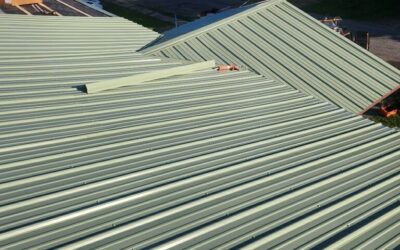What Are The Disadvantages Of A Hip Roof? A Comprehensive Guide
Hip roofs are a popular roofing style known for their elegant appearance and sturdy design. They feature slopes on all four sides, which meet at the corners, creating a consistent roofline that is both attractive and practical. Hip roofs are often praised for their stability in high winds and good drainage, but like any roofing style, they come with certain drawbacks.
If you’re considering a hip roof for your home or project, it’s essential to understand the disadvantages of a hip roof to make an informed decision. This comprehensive guide will explore the potential downsides of hip roofs, including cost, complexity, maintenance, and more.
Table of Contents
- What Is a Hip Roof?
- Advantages of Hip Roofs (Brief Overview)
- Disadvantage #1: Higher Construction Costs
- Disadvantage #2: Complexity of Design and Construction
- Disadvantage #3: Less Attic Space
- Disadvantage #4: Challenging Roof Ventilation
- Disadvantage #5: Maintenance Can Be More Difficult
- Disadvantage #6: Limited Options for Skylights and Windows
- Disadvantage #7: Roof Repairs Can Be More Complicated
- Disadvantage #8: Potential for Increased Heat Gain
- Disadvantage #9: More Material Waste
- Disadvantage #10: May Not Be Suitable for Solar Panels
- How to Mitigate Disadvantages of Hip Roofs
- When Is a Hip Roof Still a Good Choice?
- Conclusion: Is a Hip Roof Right for You?
- FAQs About Hip Roof Disadvantages
1. What Is a Hip Roof?
Before discussing disadvantages, it helps to define a hip roof. A hip roof is a type of roof with four sloping sides, all descending towards the walls. Unlike a gable roof, which has vertical ends, hip roofs slope on all sides, meeting at the top in a ridge or a point.
Hip roofs can be:
- Regular hip roofs: Four equal slopes meeting at a ridge.
- Half-hip or clipped gable roofs: A mix between hip and gable styles.
- Pyramid hip roofs: Where all four sides come to a single peak.
Hip roofs are common in both residential and commercial buildings.
2. Advantages of Hip Roofs (Brief Overview)
While this guide focuses on disadvantages, it’s good to keep in mind why hip roofs are popular:
- Excellent wind resistance due to sloping sides.
- Good water drainage and snow shedding.
- Aesthetically pleasing and balanced look.
- Stable and durable design.
3. Disadvantage #1: Higher Construction Costs
One of the main disadvantages of hip roofs is their higher construction cost compared to simpler roof types like gable roofs.
Why are hip roofs more expensive?
- More complex framing: Hip roofs require additional rafters, hip rafters, and valley framing, which takes more labor and materials.
- More cutting and fitting: Angled cuts and joinery require skilled labor.
- Additional materials: Because of the design complexity, you need more roofing materials such as shingles, underlayment, and flashing.
- Longer construction time: More work means longer build times, increasing labor costs.
These factors can increase the overall roofing budget by 10-30% or more.
4. Disadvantage #2: Complexity of Design and Construction
Hip roofs are more complex structurally and architecturally.
Impacts of this complexity:
- Design challenges: Hip roofs require precise measurements and detailed architectural planning.
- Construction difficulty: Framing the hips and valleys takes advanced carpentry skills.
- Potential for errors: Complexity increases chances for mistakes during installation.
- Specialized contractors needed: Not every roofing contractor is experienced with hip roofs.
This complexity can lead to headaches during design and construction phases.
5. Disadvantage #3: Less Attic Space
Compared to gable roofs, hip roofs provide less usable attic or storage space.
Why?
- The inward slope on all four sides reduces the vertical height of the attic.
- The hips and rafters occupy more room, leaving less open space inside.
If attic storage or living space is a priority, hip roofs may not be the best option without additional structural modifications.
6. Disadvantage #4: Challenging Roof Ventilation
Proper attic ventilation is essential to prevent moisture buildup, reduce heat, and prolong roof life. Hip roofs can make ventilation more challenging.
Reasons:
- Lack of vertical ends or gables limits natural airflow pathways.
- Hips and valleys create complicated airflow patterns.
- More vent openings (ridge vents, soffit vents) may be necessary.
- Poor ventilation can lead to problems like mold, rot, and higher cooling costs.
Installing effective ventilation systems on hip roofs requires careful planning and sometimes additional expense.
7. Disadvantage #5: Maintenance Can Be More Difficult
Hip roofs require more maintenance attention.
Considerations:
- More valleys and hip rafters mean more areas prone to debris buildup.
- Valleys are common spots for leaks if not properly installed or maintained.
- Inspecting and repairing the hip areas can be tricky due to angles and heights.
- Snow and ice buildup in valleys can cause damage over time.
Regular maintenance is crucial, which can be more time-consuming and costly.
8. Disadvantage #6: Limited Options for Skylights and Windows
Adding skylights or dormer windows is often desired for natural light and ventilation, but hip roofs pose restrictions.
Why?
- Sloping on all sides leaves fewer flat or vertical wall areas for window placement.
- Installing skylights on multiple slopes increases complexity.
- Dormers are more difficult to incorporate without disrupting the roof’s balance.
This can limit your ability to bring in natural light and fresh air.
9. Disadvantage #7: Roof Repairs Can Be More Complicated
Hip roofs often require specialized repairs because of their complex shape.
Implications:
- Fixing leaks in hips and valleys requires skilled professionals.
- Replacement of shingles or tiles may be more expensive due to labor.
- Identifying the source of a leak can be challenging with multiple slopes.
Repairs tend to be costlier and more time-consuming than on simpler roofs.
10. Disadvantage #8: Potential for Increased Heat Gain
Because of their shape and design, hip roofs may trap more heat, especially if ventilation and insulation aren’t optimized.
Reasons:
- Multiple roof planes can create heat pockets.
- Reduced attic space makes heat dissipation harder.
- Insufficient ventilation may worsen the problem.
This can increase cooling costs in warmer climates.
11. Disadvantage #9: More Material Waste
The intricate cuts and angles involved in hip roof construction lead to more material waste.
Why?
- Angled cuts produce off-cuts that cannot be reused.
- More flashing and underlayment materials are needed for valleys and hips.
- Waste adds to both cost and environmental footprint.
12. Disadvantage #10: May Not Be Suitable for Solar Panels
Hip roofs pose challenges for solar panel installation.
Issues include:
- Multiple slopes face different directions, reducing solar panel efficiency.
- Limited large flat sections for panel placement.
- Installation is more complex and expensive.
13. How to Mitigate Disadvantages of Hip Roofs
Despite the disadvantages, many of them can be managed with the right approach:
- Hire experienced roofing contractors.
- Plan ventilation carefully with ridge vents, soffit vents, and possibly mechanical ventilation.
- Use durable materials and quality flashing.
- Design with attic space optimization in mind.
- Consider solar panel systems designed for complex roofs.
14. When Is a Hip Roof Still a Good Choice?
Hip roofs remain an excellent choice when:
- You live in areas prone to high winds or hurricanes.
- You want a balanced, elegant roofline.
- You prioritize durability and weather resistance.
- You appreciate the aesthetic appeal and don’t mind higher costs.
15. Conclusion: Is a Hip Roof Right for You?
Hip roofs offer a blend of style and function but come with distinct disadvantages such as higher costs, complex construction, limited attic space, and maintenance challenges. Understanding these drawbacks will help you weigh the pros and cons and decide if a hip roof fits your project’s goals and budget.
16. FAQs About Hip Roof Disadvantages
Q: Are hip roofs more expensive to build?
Yes, due to their complexity and additional materials.
Q: Do hip roofs last longer than gable roofs?
They are generally more stable in high winds, which can prolong life in some climates.
Q: Can I add skylights to a hip roof?
Yes, but it’s more challenging and costly than on simpler roofs.
Q: Is ventilation a problem with hip roofs?
It can be if not planned carefully, so proper vent installation is essential.
 (440) 307-2060
(440) 307-2060




